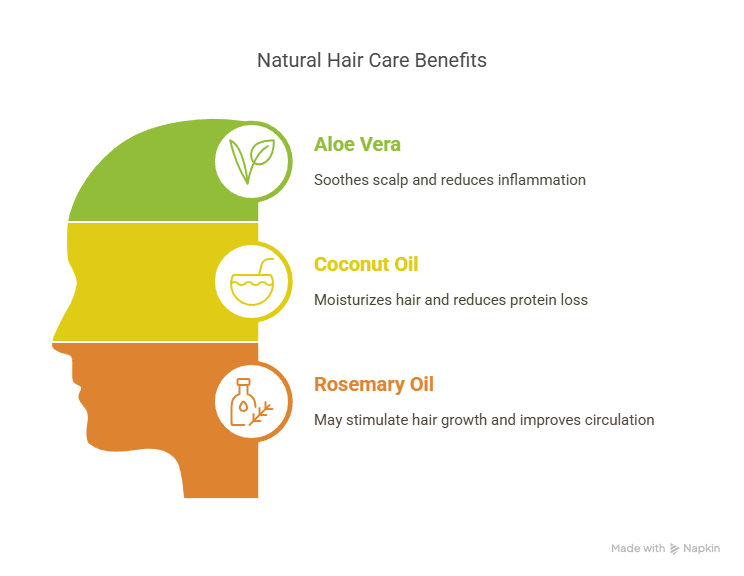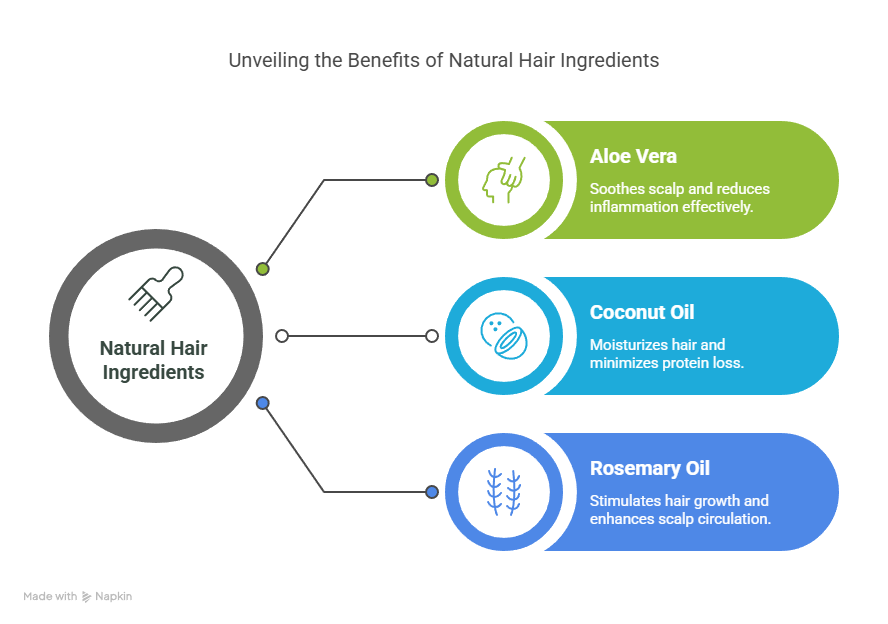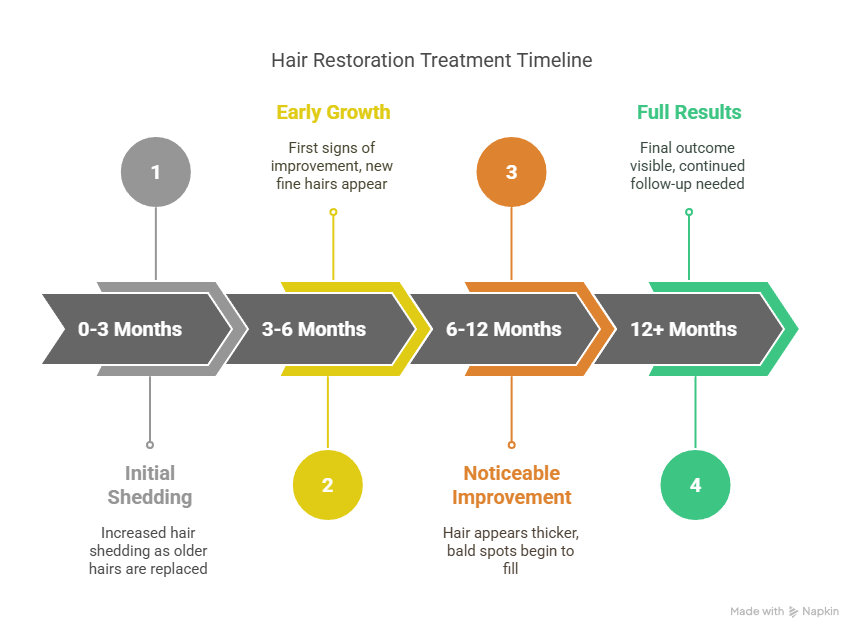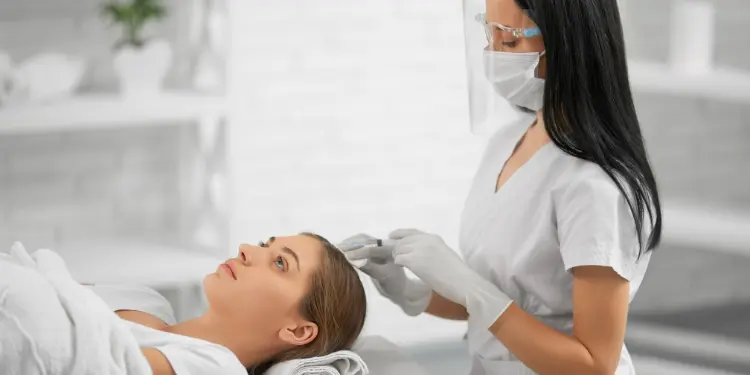For many women, hair loss is an emotional struggle that can deeply impact their confidence and how they see themselves. Whether it’s due to genetics, hormonal changes, or stress, many women are searching for effective solutions. In this article, we will explore the various options available for hair restoration for women, from medical treatments to natural remedies, helping you find the right path to regaining your hair and confidence.

Key Takeaways
- Getting to the source of hair loss is the first step toward lasting results.
- There are both medical and natural options available for hair restoration, each with varying degrees of effectiveness.
- A professional consultation ensures you receive a personalized hair restoration plan that fits your needs.
What’s Behind Hair Loss in Women? Exploring the Root Causes
Okay, so let’s talk about why hair loss for women causes. It’s way more common than people think, and honestly, it can be a real drag. It’s not just a vanity thing; it can seriously mess with your confidence. Figuring out what’s behind it is the first step to finding hair loss for women solutions.
- One of the biggest culprits is genetics. If your mom or grandma had thinning hair, chances are you might too. It’s just how it goes sometimes.
- Hormones play a huge role. Think about it: pregnancy, menopause, even just your regular cycle can throw things off. These fluctuations can really impact your hair.
- Stress is another big one. When you’re stressed, your body does weird things, and hair loss is one of them. It’s like your hair is staging a protest against your crazy life.
It’s important to remember that everyone’s different. What causes hair loss in one woman might not be the same for another. That’s why it’s a good idea to see a doctor or dermatologist if you’re really concerned. They can help you figure out what’s going on and what you can do about it.
Androgenetic alopecia—commonly referred to as female pattern hair loss—affects many women. It often starts with a gradual thinning at the part line, which can be super subtle at first. You might also notice that your ponytail isn’t as thick as it used to be. Unlike men, women usually don’t get the receding hairline or bald spots, but the overall thinning can still be really noticeable.
Other types of hair loss to watch out for:
- Telogen effluvium: This is often temporary and can be triggered by stress, illness, or even childbirth.
- Traction alopecia: This happens from constantly pulling your hair back too tightly – think tight braids or ponytails.
- Alopecia areata: This autoimmune disorder leads to patchy hair loss across the scalp and other areas. It’s a bit more random and can be quite distressing.
It’s not always easy to pinpoint the exact cause, but knowing the possibilities is a good start. And remember, there are things you can do about it!
Medical Treatments That Deliver Real Results
Okay, so you’re looking for medical treatments that actually work for hair loss? Forget the snake oil; let’s talk about stuff with some science behind it. It’s a minefield out there, but there are definitely options that can make a difference.
- Minoxidil (Rogaine): This is the big one. You can get it over the counter, and it comes in liquid or foam. It won’t work magic, but for some people, it can reduce hair loss and encourage regrowth. You just have to keep using it, or the effects will fade. It’s thought to work by widening blood vessels in the scalp, which brings more nutrients to the hair follicles.
- Finasteride (Propecia): This is a prescription pill, and it’s only for women who are not of childbearing potential. It blocks the production of a hormone called DHT, which is a major culprit in hair loss. It can have side effects, so you need to talk to your doctor about whether it’s right for you.
- Spironolactone: Another prescription medication that can help with hair loss, especially if it’s related to hormonal imbalances. It’s often used off-label for this purpose.
Everyone’s response to these treatments is different, so results may not be the same for all.
What works for one person might not work for another. It’s also crucial to have realistic expectations. These treatments can help, but they’re not going to give you a full head of hair overnight.
Laser therapy is another option. There are in-clinic laser treatments, and there are also at-home devices. The idea is that the laser light stimulates hair follicles and promotes hair growth. Some studies have shown that it can be effective, but more research is needed. You can explore laser therapy in clinic for more information.
Finally, there’s hair transplant surgery. This is a more invasive option, but it can be very effective for restoring hair. It involves taking hair follicles from one part of your scalp and transplanting them to areas where you’re experiencing hair loss. It’s a significant choice, but one that can greatly enhance both your appearance and self-confidence.
Top Natural and At-Home Hair Restoration Remedies
Okay, so maybe you’re not ready for medical treatments or you just want to try some things you can do at home first. There are a bunch of natural and at-home remedies that people swear by for hair restoration. Do they really work? Well, it depends, but some have shown promise and are worth exploring.

- Scalp massages are a simple way to potentially boost hair growth. Massaging the scalp enhances blood flow, potentially encouraging hair growth by stimulating the follicles. You can do this yourself or ask someone to help. Either way, it feels pretty good!
- Essential oils, like rosemary, lavender, and cedarwood, are often touted for their hair benefits. Stir in few drops of carrier oil, such as jojoba or coconut, and gently massage into your scalp. Some studies suggest they can help with hair thickness and growth, but more research is needed.
- What you eat affects your entire body, and that includes maintaining strong, healthy hair. Make sure you’re getting enough protein, iron, and vitamins. Lack of these essential nutrients can play a role in hair loss. Consider adding supplements if you think you’re not getting enough from your diet, but talk to your doctor first.

I’ve been trying some of these remedies myself. I started doing scalp massages every night before bed, and I’ve noticed my scalp feels healthier. I also added a rosemary oil blend to my routine. It’s hard to say if it’s making a huge difference yet, but I’m hopeful! Plus, it’s a relaxing way to end the day.
Here’s a quick look at some popular natural ingredients:
| Ingredient | Potential Benefit |
| Aloe Vera | Soothes scalp, reduces inflammation |
| Coconut Oil | Moisturizes hair, reduces protein loss |
| Rosemary Oil | May stimulate hair growth, improves circulation |
Remember, what works for one person might not work for another. It’s all about finding what’s best for you and your hair. It’s always a good idea to consult with your doctor or dermatologist before beginning any new treatment, particularly if you have pre-existing health conditions. They can help you figure out the best approach for your specific situation. Consider using hair growth oils to support hair restoration, offering a natural option instead of synthetic treatments.
How to Choose the Right Hair Restoration Solution for You
Choosing the right hair restoration solution can feel overwhelming. There are so many options available, and what works for one person might not work for another. It’s important to take a step back and consider your individual needs and expectations before making a decision. The best approach is to gather as much information as possible and consult with professionals to determine the most suitable path for you.
First, think about the cause of your hair loss. Is it genetic, stress-related, or due to a medical condition? To find the right treatment, it’s important to first understand the root cause. For example, medications like Minoxidil might be helpful for genetic hair loss, but less effective for hair loss caused by other factors.
Consider these points when making your decision:
- Severity of Hair Loss: How much hair have you lost?For those in the early stages of hair loss, non-invasive treatments could provide positive results, while more advanced hair loss might require more aggressive interventions.
- Budget: Hair restoration treatments can range in price from relatively inexpensive over-the-counter products to costly surgical procedures. Determine how much you’re willing to spend.
- Lifestyle: Some treatments require ongoing maintenance, while others are more permanent. Think about how much time and effort you’re willing to invest in your hair restoration journey.
It’s also important to have realistic expectations. No treatment can completely restore a full head of hair overnight. Be patient and give the treatment time to work. It can take several months to see noticeable results.
Finally, don’t be afraid to seek professional help. A dermatologist or hair restoration specialist can evaluate your condition and recommend the best course of action. They can also provide guidance and support throughout the process. Remember, finding the right solution is a journey, not a destination.
Real Results: What to Expect from Hair Restoration Treatments
It’s important to have realistic expectations when starting hair restoration treatments. Results vary depending on the treatment type, the individual’s condition, and adherence to the recommended regimen. Let’s explore what you can realistically anticipate.

Understanding the Timeline
- Initial Shedding: Don’t be alarmed if you notice increased shedding in the first few weeks or months. This is often a normal part of the process as older, weaker hairs are pushed out to make way for new growth.
- Early Growth (3-6 Months): You might start seeing some initial signs of improvement, such as reduced shedding or the appearance of new, fine hairs. However, significant changes usually take longer.
- Noticeable Improvement (6-12 Months): This is when most people begin to see more substantial results. Hair should appear thicker, and bald spots may start to fill in. Improved hair thickness is often reported around this time.
- Full Results (12+ Months): The final outcome of most hair restoration treatments becomes apparent after a year or more. Continued follow-up with your specialist is important to monitor progress.
Types of Results You Can Expect
- Increased Hair Density: Many treatments aim to increase the number of hairs per square inch on your scalp. This treatment can create the look of thicker, fuller hair.
- Reduced Hair Loss: Slowing down or stopping hair loss is a primary goal. You may notice less hair falling out when you brush or shower.
- Improved Hair Quality: Certain treatments can rejuvenate your hair’s texture, strength, and health, giving it a more radiant, vibrant shine.
- Coverage of Bald Spots: Depending on the treatment and the extent of hair loss, you may see bald spots gradually fill in with new hair growth.
It’s important to remember that hair restoration is a gradual process. It’s important to remember that hair restoration is a gradual process. For optimal results, patience and consistency are essential.
Factors Influencing Results
- Type of Hair Loss: Different types of hair loss respond differently to treatment. For example, androgenetic alopecia (female pattern baldness) may require different approaches than alopecia areata.
- Severity of Hair Loss: The more advanced your hair loss, the longer it may take to see results, and the less dramatic the improvement may be.
- Treatment Method: Surgical options like hair transplants can provide more immediate and significant results compared to non-surgical treatments like medications or laser therapy. However, PRP therapy combined with stem cells is also a viable option.
- Individual Response: Everyone responds differently to treatment. Several factors, including genetics, age, overall health, and lifestyle, can influence hair conditions.
Maintaining Your Results
Consistency is key. To maintain the results you’ve achieved, continuing your treatment plan is key. This may involve ongoing medication, regular laser therapy sessions, or other maintenance strategies recommended by your healthcare provider.
The Advantages of PRP Treatment for Female Hair Loss
PRP, or Platelet-Rich Plasma, therapy is gaining traction as a promising option in hair loss for women treatment. The procedure involves extracting your blood, concentrating the platelets, and re-injecting them into the scalp. But what exactly are the benefits for women experiencing hair loss?
- Stimulates Hair Growth: The concentrated platelets contain growth factors that can stimulate hair follicles, encouraging them to produce thicker, healthier hair.
- Non-Surgical Option: PRP is a non-surgical procedure, which means no incisions, stitches, or lengthy recovery times. This makes it an appealing choice for women seeking less invasive solutions.
- Addresses Various Hair Loss Types: PRP can be a viable option for treating different hair loss conditions, including androgenetic alopecia and alopecia areata. It’s worth exploring if you’re unsure about the cause of your hair thinning.
- Improved Hair Density: Many women report an increase in hair density and overall hair volume after undergoing PRP therapy. The outcome is a more youthful, fuller look.
PRP is not a one-time fix. Achieving the best results typically requires multiple sessions, and maintenance treatments may be needed to maintain the benefits. It’s important to have realistic expectations and discuss the treatment plan with your doctor.
While PRP shows promise, it’s not a guaranteed solution for everyone. Factors like age, genetics, and the underlying cause of hair loss can influence its effectiveness. It’s important to consult with a qualified specialist to decide if PRP is the right treatment for preventing hair loss in women. They can assess your individual situation and provide personalized recommendations. Finding a good hair loss treatment for women near me is important for the best results.
PRP therapy can be a game-changer for some women, offering a natural and effective way to combat hair loss and regain confidence.
How Effective Is PRP for Hair Restoration?
Okay, so you’re wondering if PRP is actually worth it, right? It’s a fair question. Let’s get into what you can realistically expect. Basically, PRP works by extracting your blood, concentrating the platelets, and injecting them back into your scalp. The idea is that these platelets release growth factors that stimulate hair follicles.
From what I’ve seen, PRP can be pretty effective for certain types of hair loss. For example, it often shows good results in cases of androgenetic alopecia, which is that common genetic hair thinning. Some studies have shown a noticeable increase in hair density after PRP treatments. It’s not a miracle cure, but it can definitely make a difference for some people.
Now, here’s the thing: it’s not a one-time fix. You’ll likely need multiple sessions to see results, and then maintenance treatments to keep those results going. Also, it’s not going to work for everyone. If your hair follicles are completely dead, PRP probably won’t bring them back to life. It works best when there’s still some activity in the follicles.
PRP can produce effects for approximately 6 months before needing another treatment course. In most cases, non-surgical hair loss treatments work only while you actively use them.
Here’s a quick rundown of what to keep in mind:
- Consistency is key: You need to stick with the treatment plan your doctor recommends.
- Manage expectations: It’s not going to give you a full head of hair overnight.
- Consider it as part of a bigger plan: PRP can work well with other treatments, like laser hair growth cap or medications.
Ultimately, the effectiveness of PRP depends on a bunch of factors, including the cause of your hair loss, your overall health, and how well you respond to the treatment. It’s best to talk to a doctor who specializes in hair restoration to see if it’s a good option for you. They can assess your situation and give you a realistic idea of what to expect. And remember, there are other options out there too, like laser hair removal, so don’t put all your eggs in one basket!
Final Thoughts on Hair Restoration for Women
In the end, hair restoration for women can be a mixed bag. There are options out there that can really help, like hair transplants and certain medications. But, it’s not a one-size-fits-all situation. What works for one person might not work for another. It’s super important to talk to a specialist who understands female hair loss. They can help you figure out the best route for your specific needs. Remember, patience is key. Results take time, and sometimes you might need to try a few different things before you find what works. So, don’t get discouraged. With the right approach, you can regain your confidence and love your hair again.
Frequently Asked Questions
What are the key factors behind hair loss in women?
Hair loss in women can result from a range of different factors. The most frequent cause is female pattern hair loss, which typically emerges in the 40s or 50s. Other reasons include stress, hormonal changes, medical conditions, and certain medications.
Are hair transplants effective for women?
Yes, hair transplants can work well for women, especially when targeting particular thinning areas or bald spots. It’s important to choose a skilled surgeon who understands how to work with women’s hair patterns.
How does PRP therapy benefit individuals experiencing hair loss?
Platelet-Rich Plasma (PRP) therapy works by taking a small amount of your blood, concentrating the platelets, and re-injecting them into the scalp. It can boost hair growth and contribute to thicker hair.
If you have any additional questions or if you would like to see if our hair restoration solutions are right for you, please contact us at Waters Edge Medical Clinic. 727-550-0855.

